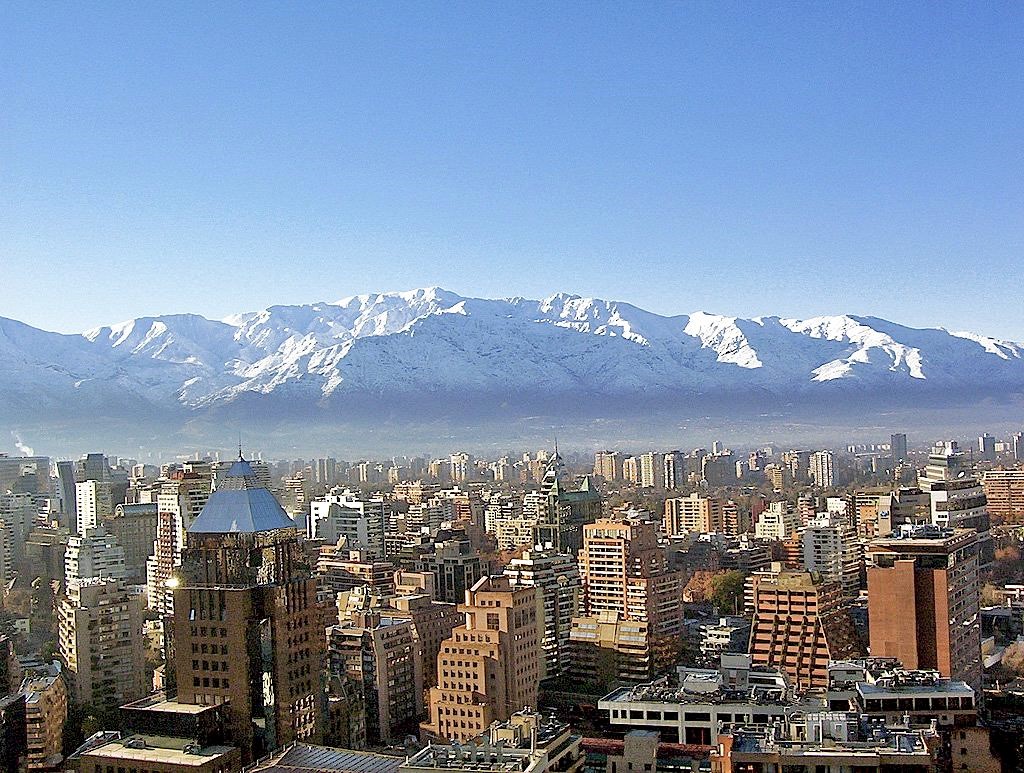Chile
Country Information
Important Dates
Key Documents & Presentations
| Document | Language | Date |
|---|---|---|
|
|
English | April 2018 |
|
|
February 2018 | |
|
|
English | October 2017 |
|
|
English | March 2017 |
|
|
English | March 2017 |
|
|
English | March 2017 |
|
|
English | March 2017 |
|
|
English | February 2017 |
|
|
English | December 2016 |
| Document | Language | Date |
|---|---|---|
|
|
English | March 2013 |
|
|
English | March 2013 |
Market-based Approach
Fact
 Chile
plans to enact a
nation-wide carbon
tax by 2017.
Chile
plans to enact a
nation-wide carbon
tax by 2017.
Chile presented a final MRP to the PA in March 2013. At the time, the country planned to use PMR funding to, in part, design a pilot ETS for its energy sector. In September of 2014, the Chilean goverment passed legislation calling for the implementation of a carbon tax. As such, Chile has broadened the scope of its MRP to focus on "carbon pricing instruments" and not specifically emissions trading. Therefore, the desired outcomes of the MRP are as follows:
- Build understanding and technical and institutional capacities across all stakeholders for the design and implementation of carbon pricing instruments and their MRV systems. This includes the simulation and evaluation of the impacts of carbon pricing instruments by the use of economic modeling tools and other evaluation instruments;
- Support development of the infrastructure needed to implement the carbon tax (MRV, Registry) and provide inputs to further discuss other carbon pricing instruments (i.e., an ETS) or the introduction of incentives (such as offsets) in the future , as well looking into specific aspects of mechanisms to deal with uncertainties and carbon price volatility;
- Draft a regulatory decree that regulates the reduction of greenhouse gases, in a phased implementation approach that builds up from a sectoral level to—eventually—the entire economy; and
- Study complementary instruments (i.e., energy efficiency and renewable energy certificates, innovative finance, offsetting system) to fit with the proposed ETS to enhance its effectiveness.
A coordination team to implement these outcomes was established in May 2015.
National Context
Mitigation Target
By 2020 Chile pledges to reduce emission by 20% below its business-as-usual emissions growth trajectory (with international support) in an effort to support its low carbon development goals. Focus is on achieving mitigation through energy efficiency and promoting renewable energy development, as well as land use change and forestry measures.
The Chilean energy sector accounts for 73% of the country’s non-LULUCF (land use, land-use changes and forestry) emissions Between 2000 and 2006, emissions from this sector grew the fastest increasing 13%. In 2006, electricity production (36%); mining, manufacturing, and industry (23%); and transportation (29%) made up most of the country’s energy emissions. The LULUCF sector represents a negative carbon balance nearing equal to about 25% of the country's emissions profile.
Regulatory Context
Chile established the National Advisory Committee on the Global Climate in 1996. The Committee played a key role in the preparation of the National Climate Change Strategy, followed by the National Climate Change Action Plan.
Bringing together representatives from Foreign Affairs, Finance, Economy, Public Works, Agriculture, Mining, Transportation and Telecommunications, Energy, and Environment ministries, the Inter-Ministerial Committee on Climate Change was created in 2009 and the Ministry of the Environment, the Environmental Evaluation Service, the Superintendent for the Environment, and the Council of Ministers for Sustainability followed in 2010.
In 2013, Chile commenced long-term mitigation scenario planning, known as Mitigation Action Plans & Scenarios or MAPS. MAPS projects national level GHG emissions for a business-as-usual scenario as well as several other mitigation scenarios that depend on various actions. Target years include 2020, 2030, and 2050. PMR coordinates with work done on MAPS.
In September 2014, carbon tax legislation became law as part of a broader tax reform efforts. The tax will enter into force in 2017 and the first year of tax liability will be 2018.
Focal Point
The Ministry of Energy coordinates GHG mitigation policies and is the focal point for PMR. The PMR Steering Committee was established in March 2012 and formed by the ministries of Foreign Affairs, Finance, Economy, Agriculture, Mining, Transport & Telecommunications, Energy and Environment.
All Documents & Presentations
| Document | Language | Date |
|---|---|---|
|
|
English | April 2016 |
| Document | Language | Date |
|---|---|---|
|
|
English | April 2016 |
|
|
English | April 2016 |
|
|
English | June 2015 |
|
|
English | June 2015 |
|
|
English | May 2015 |
|
|
English | October 2013 |
|
|
English | November 2012 |
|
|
English | November 2012 |
|
|
English | November 2012 |
|
|
English | September 2012 |
|
|
English | March 2012 |
|
|
English | May 2011 |
|
|
English | February 2011 |
|
|
English | February 2011 |
| Document | Language | Date |
|---|---|---|
|
|
English | October 2016 |
| Document | Language | Date |
|---|---|---|
|
|
English | November 2014 |
|
|
English | May 2014 |
|
|
English | May 2014 |
|
|
English | March 2012 |
|
|
English | March 2012 |
|
|
English | March 2012 |
| Document | Language | Date |
|---|---|---|
|
|
English | March 2013 |
| Document | Language | Date |
|---|---|---|
|
|
Español | October 2017 |
| Document | Language | Date |
|---|---|---|
|
|
English | May 2019 |
|
|
English | April 2016 |
|
|
English | April 2016 |
